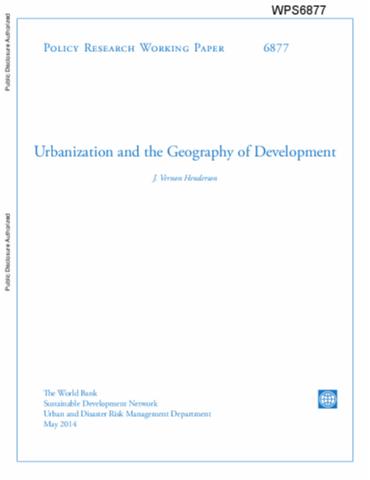Resource information
This paper focuses on three interrelated questions on urbanization and the geography of development. First, although we herald cities with their industrial bases as "engines of growth," does industrialization in fact drive urbanization? While such relationships appear in the data, the process is not straightforward. Among developing countries, changes in income or industrialization correlate only weakly with changes in urbanization. This suggests that policy and institutional factors may also influence the urbanization process. In fact, the relationship between industrialization and urbanization is absent in Sub-Saharan Africa. Second, do development policies have a big-city bias and, if so, what does this imply for growth and inequality? Intelligent public infrastructure investment inevitably involves picking winners. One hopes that such choices are based on market indicators, such as where industry is starting to agglomerate and where there are clear needs. Yet governments seem to favor the biggest cities which in turn draw firms and migrants to these cities. To try to avoid excessive in-migration and oversized, congested cities, favored cities might adopt policies that make living conditions for migrants more unpleasant. This can result in increased inequality and social tension. Finally, the paper examines city sizes and city-size distributions. Factors determining both aspects are complex and poorly understood. It is hard to be proscriptive about either individual city sizes or overall city-size distributions. The best policies strengthen institutions in the relevant markets so that market forces can move the economy toward better outcomes.


